Emerald often takes the spotlight when it comes to green gemstones, but there’s another gem that also deserves some attention: tsavorite. It’s common for people to get these two mixed up because they both come in beautiful shades of green.
However, if you dig a little deeper, you’ll find that they’re quite different from each other in many ways. That’s why it’s important to compare tsavorite vs emerald, especially if you’re thinking about buying one of these gems.
Both stones have their own unique features, like where they are found and how they shine in the light. Knowing the differences and similarities between these two gems can help you make a better choice.
Tsavorite vs Emerald – The Major Differences
From their natural shapes to where they come from, tsavorite and emerald have unique stories. Let’s dive into how these gems stand apart.
Clarity – Tsavorite is eye-clear for the most part
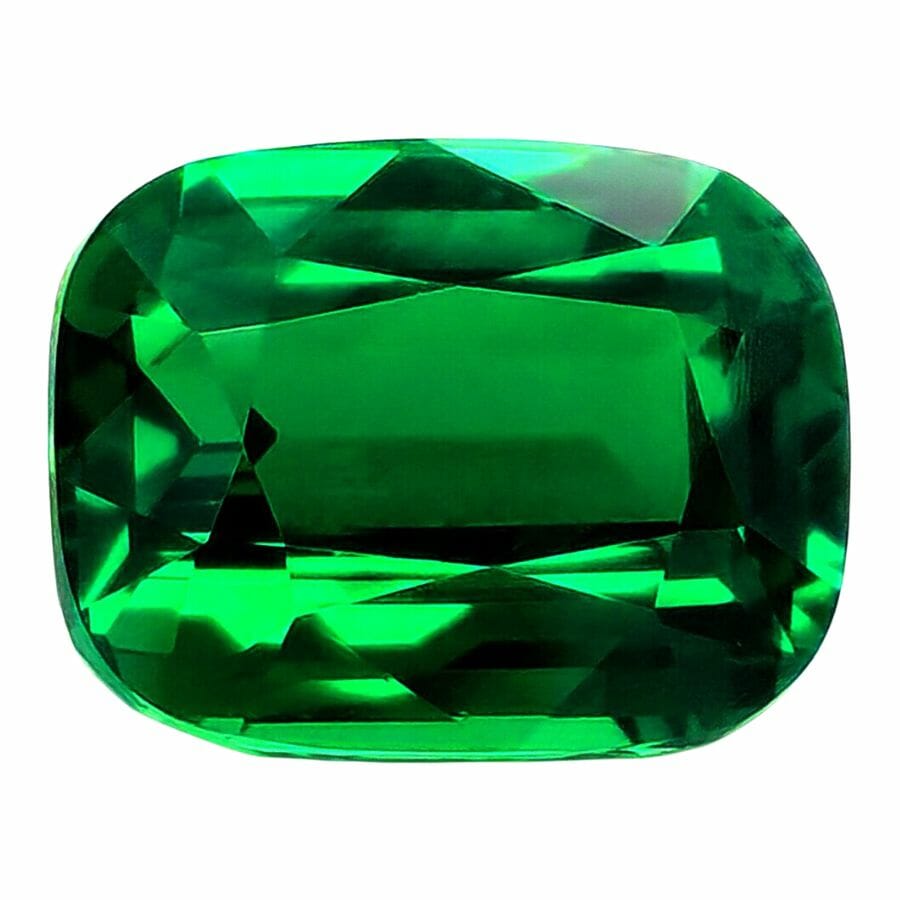
Tsavorite is usually bright and clear. The word “clear” in gemstones means you can see through them without a lot of marks or flaws inside. These marks or flaws are called “inclusions.”
So when we say that tsavorite has fewer inclusions, it means that it often looks cleaner to the naked eye.
On the other hand, emerald often has more inclusions. Some people might say it has a softer or even velvety look because of these inclusions.
In fact, emeralds have a special word for their inclusions: “jardin.” “Jardin” is a French word that means “garden.” So, you can think of the inclusions in emeralds as a tiny garden of marks inside the gem.
While both gemstones are green, the way they look inside can help you tell them apart. Some people really love the clear look of tsavorite, while others are drawn to the unique patterns in emeralds.
Colors – Emeralds come in a wider range of green hues
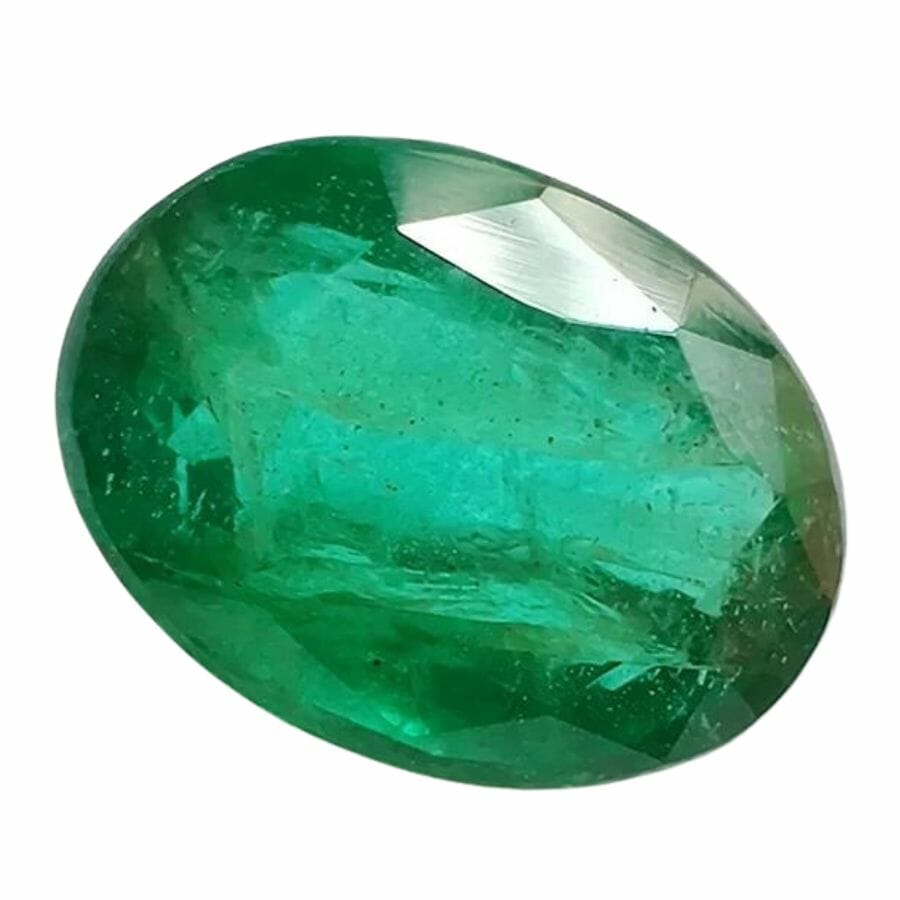
Gemstones get their colors from the minerals inside them and how they interact with light. For example, chromium and vanadium give tsavorite its lovely green. Meanwhile, emerald gets its diverse green shades mainly from chromium.
Tsavorite and emerald wear their colors differently. Tsavorite often shines in a range of green shades. Picture the light green of fresh grass or the deeper green you’d see in a thick forest. That’s the kind of green you’d find in tsavorite.
On the other side, emeralds have an even broader color palette. Some emeralds can be a yellowish-green, almost like the color of a green apple. Others can be a deep bluish-green, reminding you of the colors of the deep sea.
Luster – Tsavorite can shine like glass or like diamonds

Luster describes the way light reflects off a gemstone. Imagine how the sun shines on a smooth lake or how a flashlight beam bounces off a mirror. That’s the kind of shine that luster wants to describe.
Tsavorite has a special type of luster called vitreous. This means it shines like glass. So, if you ever looked at a window or a clear drinking glass and noticed how shiny it is, that’s what tsavorite’s luster is like.
Sometimes, tsavorite can also be adamantine, which means that it’s super shiny glittery, almost like a diamond.
Emerald, on the other hand, also has a vitreous luster. So it can look as shiny as glass too.
But there’s a catch. The little marks inside emeralds called inclusions can affect its shine. Because of these inclusions, the luster or shine of emerald can be less bright than tsavorite.
So, both gemstones can be shiny like glass, but tsavorite often appears brighter because it doesn’t have as many inclusions as emerald.
Hardness – Emeralds are somewhat tougher
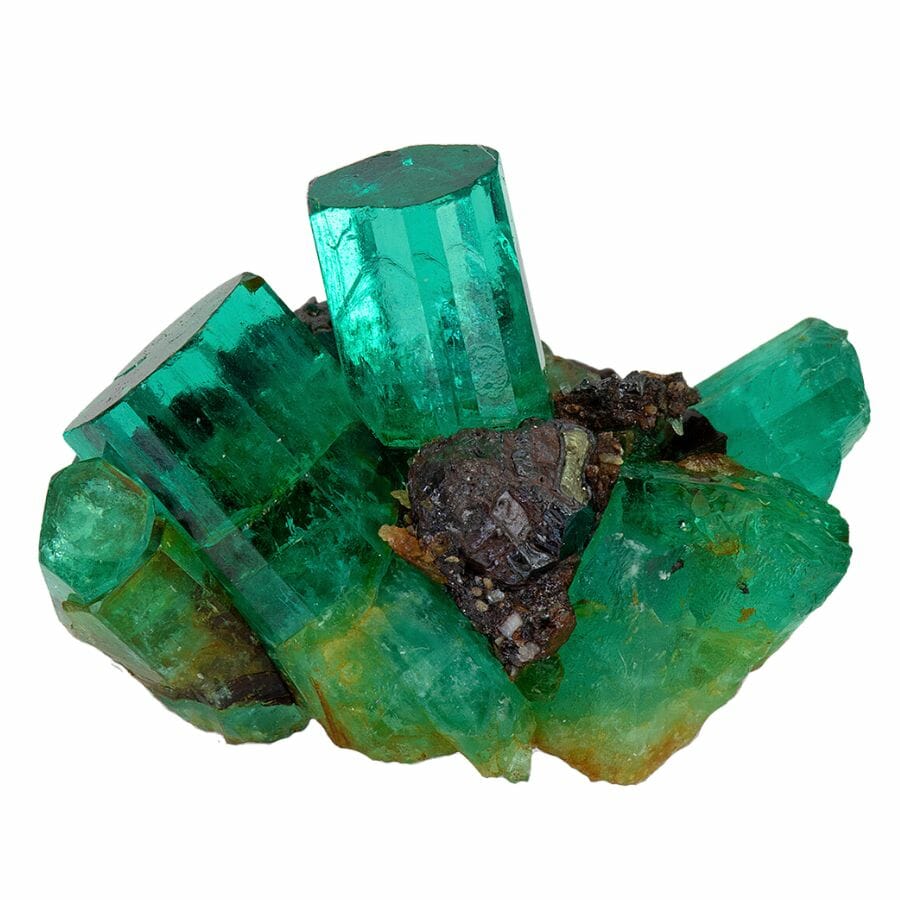
Hardness in gemstones describes how tough or resistant they are to getting scratched. Think of it like this: some toys can break easily if you drop them, while others are super sturdy.
In the same way, some gemstones can get scratched easily, and others are harder to scratch.
There’s a special scale called the Mohs scale that measures the hardness of gemstones. It goes from 1, which is super soft, up to 10, which is super hard like a diamond.
Tsavorite has a hardness of 7 to 7.5 on this scale. That means it’s pretty tough and not easily scratched.
Emerald, on the other hand, has a hardness between 7.5 to 8, so you might think it’s tougher than tsavorite. But even though emerald is hard, it’s also brittle. Being brittle means it can break or get damaged more easily.
So, even if emerald is hard, you have to be extra careful with it because it can get scratched and damaged more easily than tsavorite.
Chemical composition – Tsavorite is a green type of garnet

Everything around us is made up of chemicals, like water, air, and even chocolate chip cookies. These chemicals come together in special ways to make things what they are.
The list of chemicals and how they’re put together in something is called its chemical composition. Gemstones also have their own special recipes, or chemical compositions.
Tsavorite’s recipe is Ca3Al2Si3O12. This tells us that tsavorite is made of calcium, aluminum, silicon, and oxygen. This mix makes it a type of garnet.
Emerald has a different recipe: Be3Al2(SiO3)6. This tells us that emerald is made of beryllium, aluminum, silicon, and oxygen. This means that emerald is a type of beryl.
So, even though tsavorite and emerald might look a bit similar because they’re both green, they’re made of different stuff.
Cleavage – Emeralds break in a single direction

Cleavage describes the way a gemstone breaks. If you’ve ever broken a chocolate bar along those straight lines, that’s kind of how cleavage works for gemstones. It’s a natural way the stone can split or break in certain directions.
Tsavorite is pretty cool because it has no cleavage. This means it doesn’t have those natural breaking lines. If you tried to break it, it wouldn’t have a predictable pattern.
Emerald is a bit different. It has imperfect cleavage in one direction. This means that emerald has one main way it might break if it’s hit or dropped.
But because its cleavage is “imperfect,” it’s not always a clean break. It might be a bit rough or uneven.
Fluorescence – Tsavorites from a specific place can glow under UV light

Fluorescence happens when certain lights, like UV (ultraviolet) lights, shine on something and make it glow a color that’s different from its normal color.
Tsavorite and emerald have their own ways of reacting to this UV light. Most tsavorite stones don’t really glow under UV light.
But, there’s an exception! Some tsavorite stones from a place called Merelani Hills in Tanzania can glow pink-red and yellow when you shine a UV lamp on them.
Emeralds, on the other hand, can sometimes glow too, but it’s a bit different. Some of them might glow a weak red to pink color under UV light. Not all of them do this, but some pieces can surprise you.
Crystal structure – Emerald crystals are shaped like pencils

Imagine building something using blocks. The way you stack and arrange these blocks to build a structure is a bit like the way a gemstone’s crystal structure is formed.
It’s the pattern or design that the tiny bits inside the gemstone follow as they come together.
Now, imagine having differently shaped blocks: some are cubes, and some are hexagons. Each shape can make different structures. This is the way it is with tsavorite and emerald’s crystal structures.
Tsavorite has what’s called a cubic crystal system. It’s like it’s built with cube blocks all stacked neatly together. That’s because garnets like tsavorite like to form in this cube pattern.
Emerald is a little different. It follows a hexagonal crystal system. Instead of cubes, imagine hexagonal or six-sided prisms. That’s the natural shape of emerald crystals.
Density – Tsavorite is denser
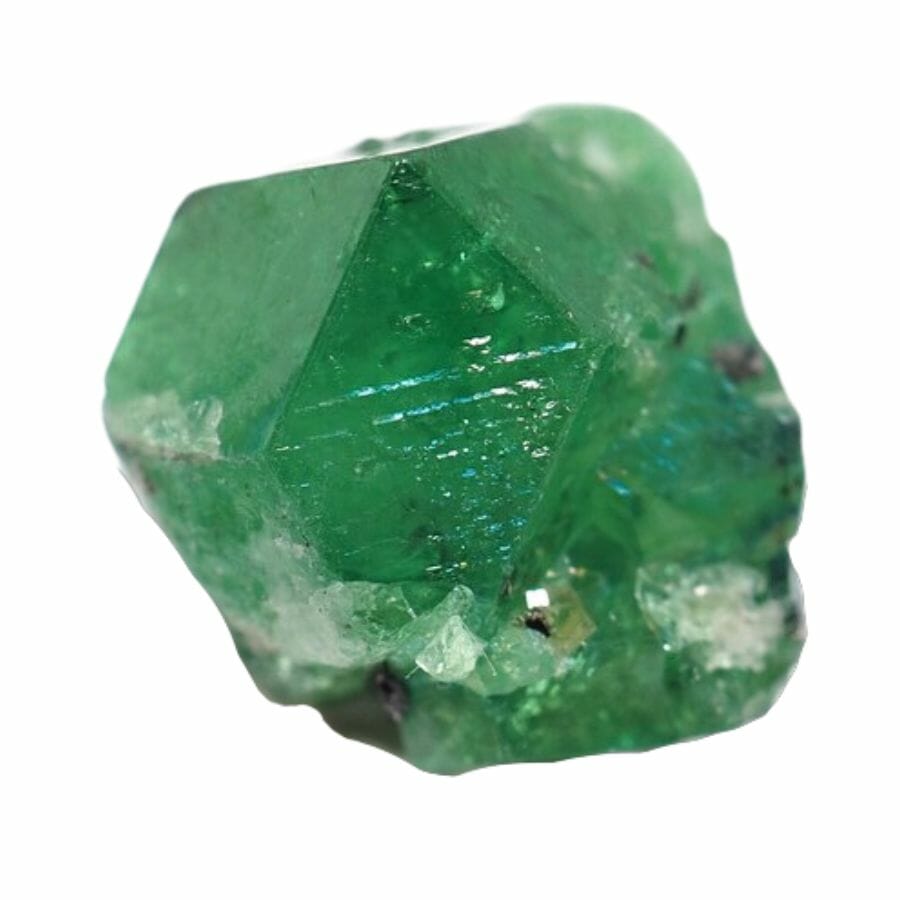
Density tells us how much stuff is packed into a certain space. Imagine a suitcase. If you lightly pack it with fluffy pillows, it’s not very dense. But if you fill it with heavy books, it’s super dense.
Gemstones like tsavorite and emerald have different densities. You can use density to tell emerald vs tsavorite. Tsavorite has a density of 3.6 to 3.68 grams per cubic centimeter.
On the other hand, an emerald would weigh around 2.76 grams per cubic centimeter. This means emerald is less dense than tsavorite.
Formation – Emerald can form in rocks and hydrothermal veins

Tsavorite is mainly formed in something called metamorphic rocks. These rocks are made when other rocks are put under a lot of heat and pressure deep inside the Earth.
Emerald has a bit of a mixed story. Just like tsavorite, it can form in metamorphic rocks. But emeralds can also form in places called hydrothermal veins.
These hydrothermal veins are like underground rivers where hot water carries minerals around. Over time, these minerals settle down and become emeralds.
If you’re wondering where to go rockhounding, areas with metamorphic rocks and hydrothermal veins are good spots.
Location – Tsavorite can only be found in a few places

Tsavorite and emerald are like world travelers, but they have favorite places where they like to hang out.
Tsavorite is kind of picky. It mainly likes to be in Tanzania and Kenya in Africa. The really special thing is that the absolute best tsavorite, the one with the brightest green color, comes from a place called Tsavo in Kenya.
Emerald, on the other hand, has been to a lot of places around the world. It’s been spotted in countries from Afghanistan to Zimbabwe.
In the United States, you might find emeralds in states like Montana, North Carolina, and even Nevada. Finding gems near you could be easy if you live in these states.
Price – Emerald is generally more expensive

Buying gemstones is a bit like shopping for toys or clothes. Some items cost more than others, and several things can affect the price.
For gemstones, things like color, clarity (how clear or free of marks it is), size, and rarity matter a lot. If a gemstone is rare, meaning there’s not a lot of it, the price might go up.
Now, when we look at tsavorite and emerald, there are differences in price. Tsavorite can be less costly than some other gems, but if you find a really high-quality tsavorite, it might have a higher price tag.
Remember, good color and clarity can bump up the cost of a gem!
The price of emeralds, especially the really bright green ones without many marks inside, can be higher. They’re like the fancy dresses or rare action figures in the gem world.
So, sometimes, they can be among the most expensive gemstones you can buy.
In short, while both tsavorite and emerald can cost a lot for top-notch pieces, emeralds are generally more expensive because they’re often seen as fancier and more unique.
Emerald vs Tsavorite – The Similarities
While there are noticeable differences tsavorite and emerald, they also share some cool similarities. Let’s explore what makes them alike in the world of gemstones.
Streak – Both tsavorite and emerald have a colorless streak

Streak is the color a gemstone leaves behind when it’s rubbed against a rough surface, like a piece of porcelain called a streak plate. Think of it like drawing a line with a crayon, but instead, it’s the gem doing the coloring.
Now, even though gemstones can be all sorts of colors and shades, their streak color doesn’t change. It’s like a gemstone’s hidden signature.
That’s why looking at a gem’s streak is a super helpful way to figure out what kind of gem you’re dealing with.
Here’s something interesting: both tsavorite and emerald, even with their lovely green shades, leave a colorless streak. That means if you rub them on a streak plate, they won’t leave any color behind.
This is because both tsavorite and emerald are harder than porcelain, so they won’t get ground down into a powder when you scratch them against a streak plate. They’re more likely to scratch the plate instead.
Magnetism – Neither mineral is attracted to magnets

Magnets stick to certain things like metal and attract or push away other magnets. This ability to attract or repel is called “magnetism.”
When we talk about tsavorite and emerald and their magnetism, it’s pretty straightforward. Both these gemstones don’t really have that magnetic power.
If you tried to stick a magnet to them, they wouldn’t attract the magnet or push it away.
Conductivity – Tsavorite and emerald both cannot conduct electricity

Conductivity refers to how well something can carry electricity. Some things, like metal wires, are great at carrying electricity. They’re called “conductors.”
But other things, like rubber or wood, are not so good at it. We call those “insulators.”
Tsavorite and emeralds are a lot like rubber when it comes to conductivity. Both of them are poor conductors of electricity. This means if you tried to pass electricity through them, not much would happen.
That’s why we say their “insulating properties” are strong.
The Easiest Ways to Tell Tsavorite and Emerald Apart
From the colors they show off to the tiny marks inside tsavorite and emerald, these stones have distinct traits. So, are you ready to learn These are the easiest ways to tell which is which.
Evaluate the green hue of the stone
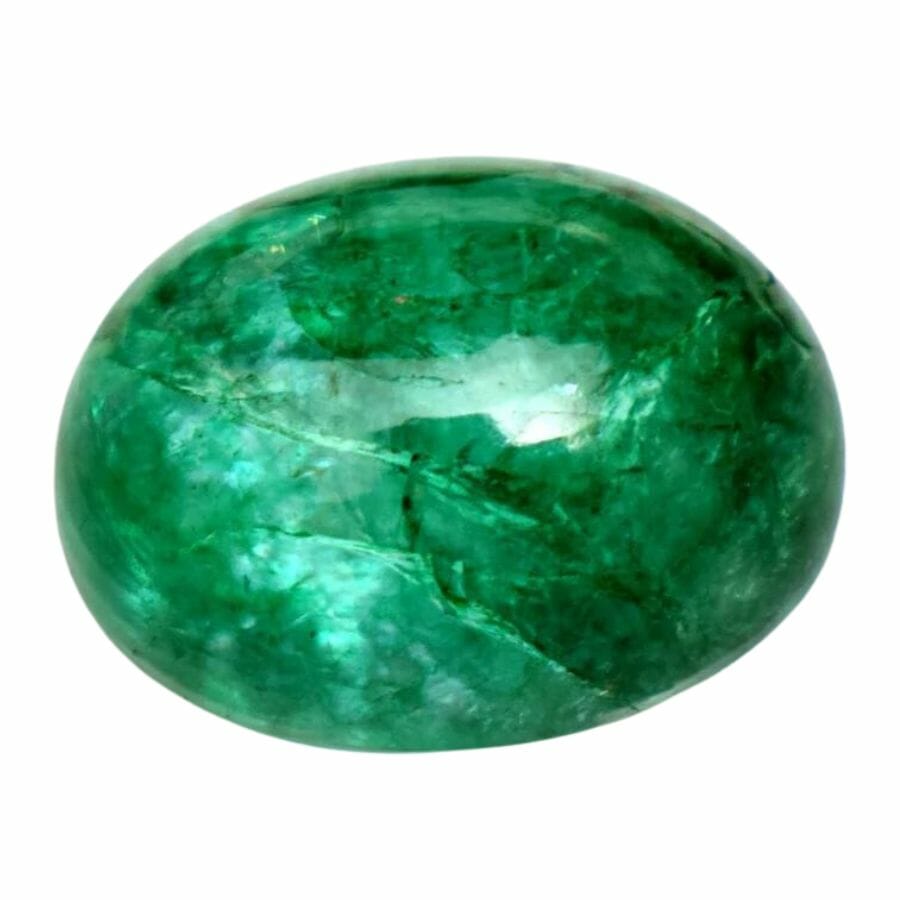
Tsavorite has a vibrant green shade that’s really eye-catching. Sometimes, it might even remind you of the deep green color of a forest. This rich and lively green is a big hint that you’re holding a tsavorite.
If you see a gemstone that’s super bright and looks like the green leaves in summer, it’s probably tsavorite.
Emeralds are a bit tricky because they can come in a bunch of different green shades. Some emeralds might be a soft, pale green, almost like a light green apple. Other times, they can be a deep blue-green, like the deep parts of the ocean.
So, if you’re looking at a gem that has a more varied green color, or if it’s a green that leans a bit blue, you’re likely looking at an emerald.
Look closely at the stone’s clarity

When you look closely at a tsavorite, you’ll usually see a pretty clear gem. That means it doesn’t have a lot of those tiny marks or inclusions inside. It’s like looking through a clean window without many smudges.
When you peek inside an emerald, you’ll often spot a bunch of little marks or inclusions. These can make the emerald seem a bit cloudy or fuzzy. Some people say it looks like a tiny garden or mini spiderweb inside the gem.
Even though these inclusions might sound like imperfections, they give emeralds character and uniqueness.
To keep it simple: if the gem looks super clear, you’re probably holding a tsavorite. If it has a bunch of tiny internal marks or a cloudy look, it’s likely an emerald.
Check the natural shape of the crystal

By looking at the natural shape of raw crystals, you can more easily distinguish tsavorite vs emerald.
If you found a tsavorite in the wild, it would probably look round or oval. It’s like finding a pebble at the beach.
Emeralds are totally different in shape when they’re in their natural, untouched form. They grow in an elongated six-sided shape, like a pencil. If you see a raw green gem shaped like a prism, you’ve got an emerald.


